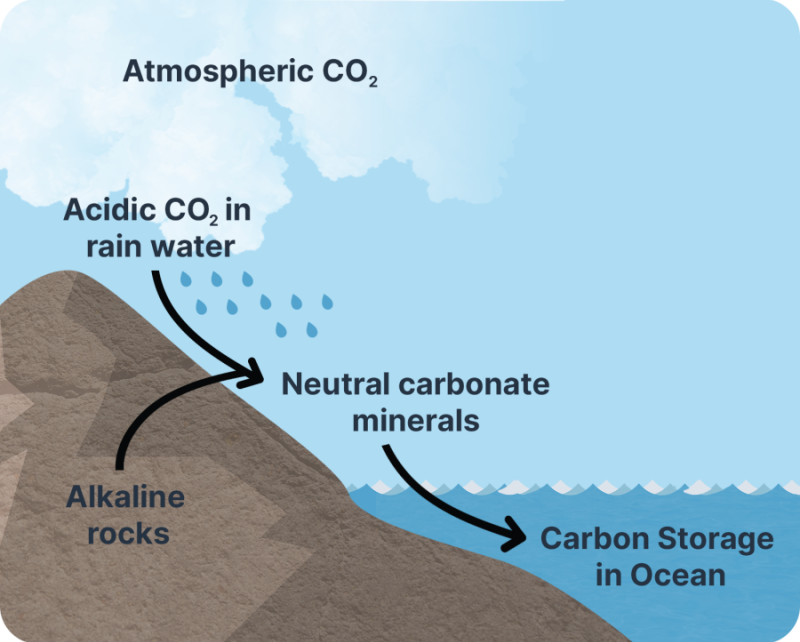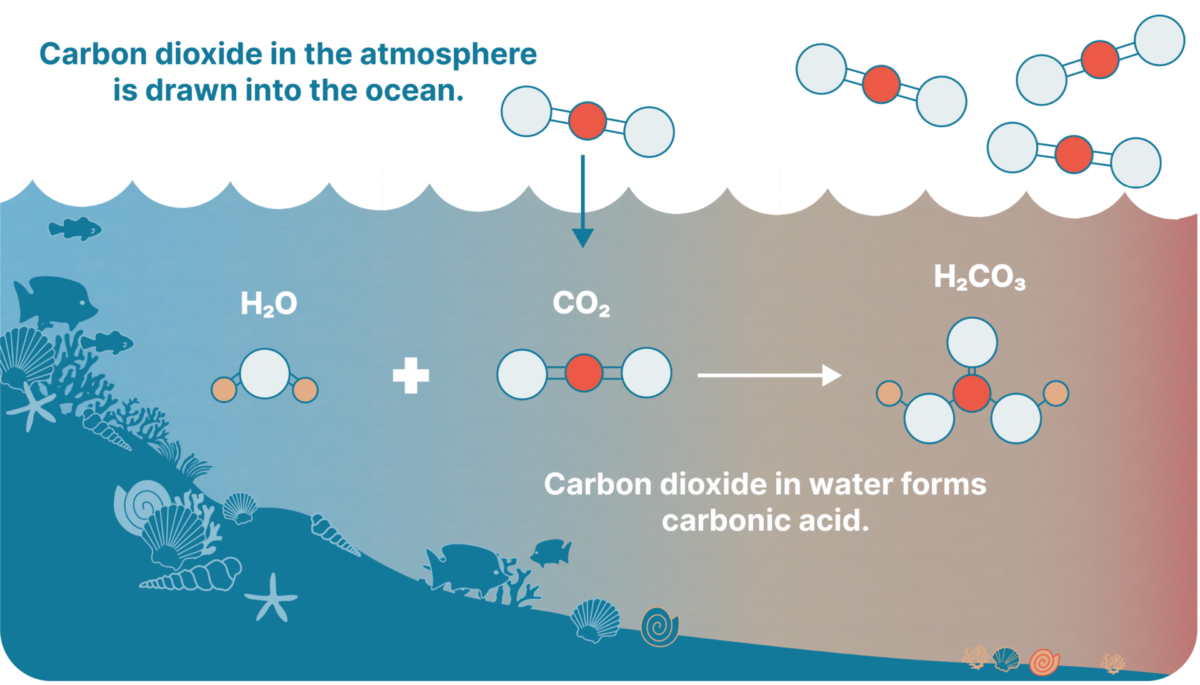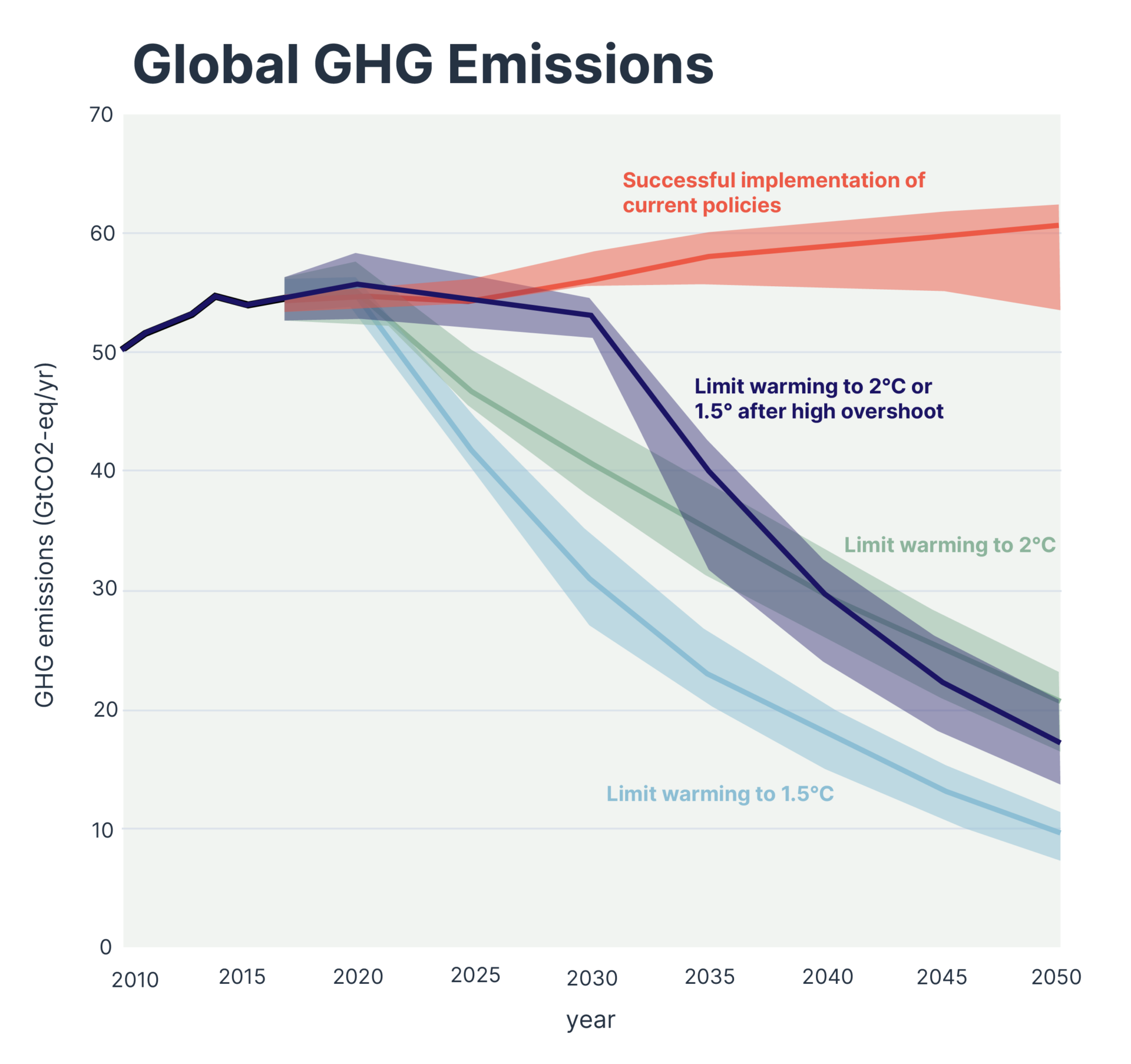The climate crisis is the biggest
challenge humanity will solve.
The greenhouse gases that our modern world has released into the atmosphere are changing every aspect of the world we live in, from the weather patterns we experience to the food we eat.
But the crisis isn’t just unfolding on land. The same carbon dioxide emissions are also damaging the ocean, raising its temperature and making it more acidic.
These changes have already caused tremendous habitat damage and loss of marine life, particularly among shellfish and corals, which are being depleted around the globe.
The ocean and the atmosphere form one interconnected ecosystem: when one suffers, so does the other. When one thrives, the other improves. Planetary is working to restore the planet’s climate by healing the ocean.

Natural Carbon Removal
The world has two important natural carbon cycles. The first occurs biologically: plants capture carbon dioxide (CO2) from the air as they grow, and some of that carbon is sequestered as biomass and stored in soil.
The second carbon cycle on our planet – a geologic and chemical cycle – moves more slowly, but at a much larger scale.
As rain falls through the sky, it picks up excess CO2 and becomes slightly acidic. When this rain falls on rocks around the world, some of the acid is neutralized by antacids in the rocks and converted to other dissolved compounds called carbonates and bicarbonates. Over time, these compounds travel through streams and rivers and accumulate in the ocean, where they remain dissolved for roughly 100,000 years before entering long-term geologic storage. This process is the reason our oceans hold almost 90% of the carbon on Earth’s surface.
Over thousands of years, this cycle acts as a self-regulating thermostat for Earth, balancing out natural fluctuations in atmospheric CO2 by locking it away in the ocean. Unfortunately, humans have released so much CO2 so quickly that we have overwhelmed this cycle, preventing nature from maintaining its long term balance.
This carbon cycle will naturally rebalance the climate by storing most of this excess CO2 in our oceans, but it will take millennia.

Ocean Acidification
Another consequence of high atmospheric CO2 levels is ocean acidification.
When excess CO2 enters the atmosphere, some of it is pushed into the sea and is changed into an acid. This process has led to a 30% increase in surface ocean acidity in the past two hundred years, with devastating effects on marine ecosystems and organisms.
Marine shells in particular are sensitive to this change. These shells are formed from carbonates, and corals and shellfish struggle to produce them in acidic environments. As their shells and bodies become weaker, marine organisms become more vulnerable, and marine ecosystems become stressed and begin to decline.
The natural geologic carbon cycle described above helps to combat these effects. By adding alkaline material to seawater, the cycle helps counter ocean acidification and restore ocean chemistry.
However, under current conditions, it would take many thousands of years for the cycle to add enough alkalinity to make a positive difference globally.

What if we could give nature a helping hand?

Current Climate Trajectories
To avert the worst effects of climate change, the global community has set a goal of limiting global warming to an average of 1.5°C above pre-industrial levels.
That goal was selected to reduce risks to marine biodiversity and ecosystems, as well as negative impacts to human health, security, and livelihoods.
We’ve already warmed 1.1°C.
This may not seem like a big change, but even small shifts in an average can mean significant changes to ecosystems. The warming will not be distributed evenly across the globe – some regions, like the poles, will see warming much greater than the average. Further, climate changes are not seen immediately as emissions increase. We have yet to feel the full effects of the emissions already in the atmosphere.
At 1.5°C of warming, we will see over a foot of sea level rise, the loss of 70% of global coral reefs, increased natural disasters on land and at sea, and the loss of habitable land. At 2°C, 99% of coral reefs will be lost, and polar regions could be 7°C (12.6°F) warmer than they were 100 years ago, leading to ice sheet collapse and greater sea level rise. Every tenth of a degree of increase leads to worse outcomes.
Countries and organizations around the world have committed themselves to ambitious emissions reductions programs and policy changes to avoid this. We’re still on track to see over 3°C warming by the end of the century.
We must drastically and quickly cut carbon emissions. But we must do more. To avoid the worst impacts of climate change we must also remove carbon from the air.

